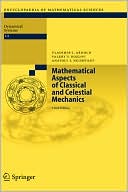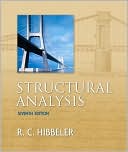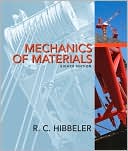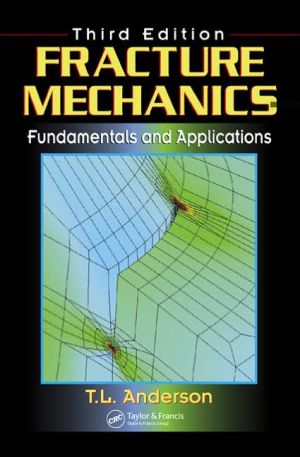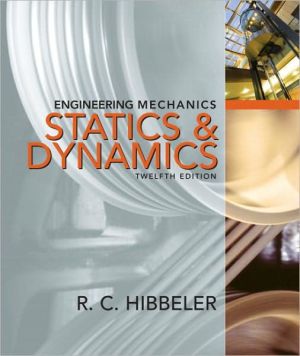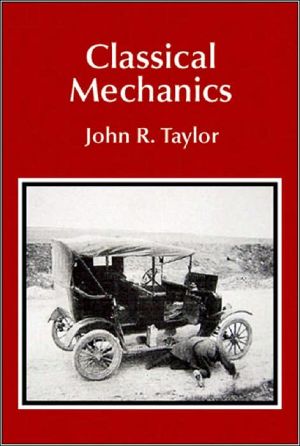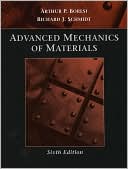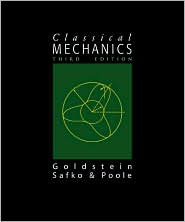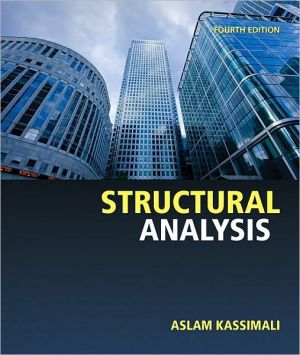Mathematical Aspects of Classical and Celestial Mechanics
Search in google:
In its expanded and improved 3rd edition, this work describes the fundamental principles, problems, and methods of classical mechanics. The authors stress the working apparatus of classical mechanics, rather than its physical foundations or applications.
Basic Principles of Classical Mechanics 1Newtonian Mechanics 1Space, Time, Motion 1Newton-Laplace Principle of Determinacy 2Principle of Relativity 9Principle of Relativity and Forces of Inertia 12Basic Dynamical Quantities. Conservation Laws 15Lagrangian Mechanics 17Preliminary Remarks 17Variations and Extremals 19Lagrange's Equations 21Poincare's Equations 23Motion with Constraints 26Hamiltonian Mechanics 30Symplectic Structures and Hamilton's Equations 30Generating Functions 33Symplectic Structure of the Cotangent Bundle 34The Problem of n Point Vortices 35Action in the Phase Space 37Integral Invariant 38Applications to Dynamics of Ideal Fluid 40Vakonomic Mechanics 41Lagrange's Problem 42Vakonomic Mechanics 43Principle of Determinacy 46Hamilton's Equations in Redundant Coordinates 47Hamiltonian Formalism with Constraints 48Dirac's Problem 48Duality 50Realization of Constraints 51Various Methods of Realization of Constraints 51Holonomic Constraints 52Anisotropic Friction 54Adjoint Masses 55Adjoint Masses and Anisotropic Friction 58Small Masses 59The n-Body Problem 61The Two-Body Problem 61Orbits 61Anomalies 67Collisions and Regularization 69Geometry of Kepler's Problem 71Collisions and Regularization 72Necessary Condition for Stability 72Simultaneous Collisions 73Binary Collisions 74Singularities of Solutions of the n-Body Problem 78Particular Solutions 79Central Configurations 79Homographic Solutions 80Effective Potential and Relative Equilibria 82Periodic Solutions in the Case of Bodies of Equal Masses 82Final Motions in the Three-Body Problem 83Classification of the Final Motions According to Chazy 83Symmetry of the Past and Future 84Restricted Three-Body Problem 86Equations of Motion. The Jacobi Integral 86Relative Equilibria and Hill Regions 87Hill's Problem 88Ergodic Theorems of Celestial Mechanics 92Stability in the Sense of Poisson 92Probability of Capture 94Dynamics in Spaces of Constant Curvature 95Generalized Bertrand Problem 95Kepler's Laws 96Celestial Mechanics in Spaces of Constant Curvature 97Potential Theory in Spaces of Constant Curvature 98Symmetry Groups and Order Reduction 103Symmetries and Linear Integrals 103Nother's Theorem 103Symmetries in Non-Holonomic Mechanics 107Symmetries in Vakonomic Mechanics 109Symmetries in Hamiltonian Mechanics 110Reduction of Systems with Symmetries 111Order Reduction (Lagrangian Aspect) 111Order Reduction (Hamiltonian Aspect) 116Examples: Free Rotation of a Rigid Body and the Three-Body Problem 122Relative Equilibria and Bifurcation of Integral Manifolds 126Relative Equilibria and Effective Potential 126Integral Manifolds, Regions of Possible Motion, and Bifurcation Sets 128The Bifurcation Set in the Planar Three-Body Problem 130Bifurcation Sets and Integral Manifolds in the Problem of Rotation of a Heavy Rigid Body with a Fixed Point 131Variational Principles and Methods 135Geometry of Regions of Possible Motion 136Principle of Stationary Abbreviated Action 136Geometry of a Neighbourhood of the Boundary 139Riemannian Geometry of Regions of Possible Motion with Boundary 140Periodic Trajectories of Natural Mechanical Systems 145Rotations and Librations 145Librations in Non-Simply-Connected Regions of Possible Motion 147Librations in Simply Connected Domains and Seifert's Conjecture 150Periodic Oscillations of a Multi-Link Pendulum 153Periodic Trajectories of Non-Reversible Systems 156Systems with Gyroscopic Forces and Multivalued Functionals 156Applications of the Generalized Poincare Geometric Theorem 159Asymptotic Solutions. Application to the Theory of Stability of Motion 161Existence of Asymptotic Motions 162Action Function in a Neighbourhood of an Unstable Equilibrium Position 165Instability Theorem 166Multi-Link Pendulum with Oscillating Point of Suspension 167Homoclinic Motions Close to Chains of Homoclinic Motions 168Integrable Systems and Integration Methods 171Brief Survey of Various Approaches to Integrability of Hamiltonian Systems 171Quadratures 171Complete Integrability 174Normal Forms 176Completely Integrable Systems 179Action-Angle Variables 179Non-Commutative Sets of Integrals 183Examples of Completely Integrable Systems 185Some Methods of Integration of Hamiltonian Systems 191Method of Separation of Variables 191Method of L-A Pairs 197Integrable Non-Holonomic Systems 199Differential Equations with Invariant Measure 199Some Solved Problems of Non-Holonomic Mechanics 202Perturbation Theory for Integrable Systems 207Averaging of Perturbations 207Averaging Principle 207Procedure for Eliminating Fast Variables. Non-Resonant Case 211Procedure for Eliminating Fast Variables. Resonant Case 216Averaging in Single-Frequency Systems 217Averaging in Systems with Constant Frequencies 226Averaging in Non-Resonant Domains 229Effect of a Single Resonance 229Averaging in Two-Frequency Systems 237Averaging in Multi-Frequency Systems 242Averaging at Separatrix Crossing 244Averaging in Hamiltonian Systems 256Application of the Averaging Principle 256Procedures for Eliminating Fast Variables 265KAM Theory 273Unperturbed Motion. Non-Degeneracy Conditions 273Invariant Tori of the Perturbed System 274Systems with Two Degrees of Freedom 279Diffusion of Slow Variables in Multidimensional Systems and its Exponential Estimate 286Diffusion without Exponentially Small Effects 292Variants of the Theorem on Invariant Tori 294KAM Theory for Lower-Dimensional Tori 297Variational Principle for Invariant Tori. Cantori 307Applications of KAM Theory 311Adiabatic Invariants 314Adiabatic Invariance of the Action Variable in Single-Frequency Systems 314Adiabatic Invariants of Multi-Frequency Hamiltonian Systems 323Adiabatic Phases 326Procedure for Eliminating Fast Variables. Conservation Time of Adiabatic Invariants 332Accuracy of Conservation of Adiabatic Invariants 334Perpetual Conservation of Adiabatic Invariants 340Adiabatic Invariants in Systems with Separatrix Crossings 342Non-Integrable Systems 351Nearly Integrable Hamiltonian Systems 351The Poincare Method 352Birth of Isolated Periodic Solutions as an Obstruction to Integrability 354Applications of Poincare's Method 358Splitting of Asymptotic Surfaces 360Splitting Conditions. The Poincare Integral 360Splitting of Asymptotic Surfaces as an Obstruction to Integrability 366Some Applications 370Quasi-Random Oscillations 373Poincare Return Map 375Symbolic Dynamics 378Absence of Analytic Integrals 380Non-Integrability in a Neighbourhood of an Equilibrium Position (Siegel's Method) 381Branching of Solutions and Absence of Single-Valued Integrals 385Branching of Solutions as Obstruction to Integrability 385Monodromy Groups of Hamiltonian Systems with Single-Valued Integrals 388Topological and Geometrical Obstructions to Complete Integrability of Natural Systems 391Topology of Configuration Spaces of Integrable Systems 392Geometrical Obstructions to Integrability 394Multidimensional Case 396Ergodic Properties of Dynamical Systems with Multivalued Hamiltonians 396Theory of Small Oscillations 401Linearization 401Normal Forms of Linear Oscillations 402Normal Form of a Linear Natural Lagrangian System 402Rayleigh-Fisher-Courant Theorems on the Behaviour of Characteristic Frequencies when Rigidity Increases or Constraints are Imposed 403Normal Forms of Quadratic Hamiltonians 404Normal Forms of Hamiltonian Systems near an Equilibrium Position 406Reduction to Normal Form 406Phase Portraits of Systems with Two Degrees of Freedom in a Neighbourhood of an Equilibrium Position at a Resonance 409Stability of Equilibria of Hamiltonian Systems with Two Degrees of Freedom at Resonances 416Normal Forms of Hamiltonian Systems near Closed Trajectories 417Reduction to Equilibrium of a System with Periodic Coefficients 417Reduction of a System with Periodic Coefficients to Normal Form 418Phase Portraits of Systems with Two Degrees of Freedom near a Closed Trajectory at a Resonance 419Stability of Equilibria in Conservative Fields 422Lagrange-Dirichlet Theorem 422Influence of Dissipative Forces 426Influence of Gyroscopic Forces 427Tensor Invariants of Equations of Dynamics 431Tensor Invariants 431Frozen-in Direction Fields 431Integral Invariants 433Poincare-Cartan Integral Invariant 436Invariant Volume Forms 438Liouville's Equation 438Condition for the Existence of an Invariant Measure 439Application of the Method of Small Parameter 442Tensor Invariants and the Problem of Small Denominators 445Absence of New Linear Integral Invariants and Frozen-in Direction Fields 445Application to Hamiltonian Systems 446Application to Stationary Flows of a Viscous Fluid 449Systems on Three-Dimensional Manifolds 451Integral Invariants of the Second Order and Multivalued Integrals 455Tensor Invariants of Quasi-Homogeneous Systems 457Kovalevskaya-Lyapunov Method 457Conditions for the Existence of Tensor Invariants 459General Vortex Theory 461Lamb's Equation 461Multidimensional Hydrodynamics 463Invariant Volume Forms for Lamb's Equations 465Recommended Reading 471Bibliography 475Index of Names 507Subject Index 511
